Technique #6: Hypnotic Copywriting
Article #6 from the series, 10 Persuasive Copywriting Techniques
Topics Covered in This Article
Hypnotic Copywriting: a style of writing that engages the emotions of the reader by using words, phrases, and descriptions that appeal to one or more of the five senses (sight, sound, touch, taste, and smell).
Hypnotic Copywriting
In the first four articles of this series, we talked about turning attention into interest, interest into desire, and desire into urgency. As mentioned before, the final techniques in this course will focus on turning urgency into action.
Techniques 5-8 focus on applying what you’ve learned so far and what you’ll learn in the final techniques. Trance is sixth of these techniques. Trance is the active technique behind the practice called “hypnotic copywriting.”
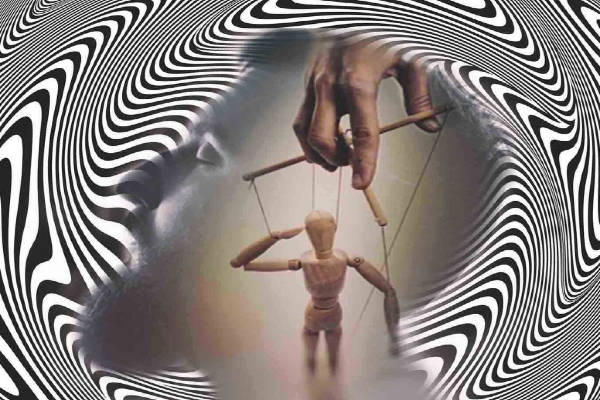
The Role of Hypnotic Copywriting
While I did not coin the term hypnotic copywriting, the practice of hypnotic storytelling has been around for a long time—possibly thousands of years or more. Since this is my series, I’ll give you my definition of hypnotic copywriting:
“Creating a synthetic experience in your reader’s imagination and thus literally changing the state of their nervous system.”
What is a synthetic experience?
In a moment, I want you to close your eyes and imagine yourself about to dig into your favorite dish. You’re sitting down in comfortable clothes at a nice quiet restaurant. Your best friend is with you. The waiter slides the dish onto the table right under your nose.
The fresh aroma rises into your face as you breathe deeply, taking in the smell of every ingredient. You pick up your fork, plunge it into the heap of delicious food and lift it to your mouth. Your taste buds light up as you take the bite and start to slowly start chew. It’s the perfect temperature and texture. You can taste every ingredient, from the most abundant, down to the most subtle.
“How is it?” your friend asks.
“Amazing,” you answer. “Like, better than I’ve had anywhere.”
Now, close your eyes and really imagine that scene in your mind, down to the last detail. Feel the temperature of the dining room, the relaxing music, and the fresh aroma of your favorite dish wafting up from the table. While you’re not actually sitting in the restaurant eating your favorite dish, you are experiencing it in your imagination AND in your body. This is what I mean by a synthetic experience.
The experience itself is not real, but if the imagination of it is clear and vivid enough, your nervous system will respond almost as if it were. Now, let’s think about what I just did to create this scene in your mind.
I wrote this while sitting at my desk in Tampa, Florida at 11: 57 EST on a Wednesday night. I’m probably miles away from where you sit reading this, and I just transmitted a message into your mind across time and space using only the words written on this page.
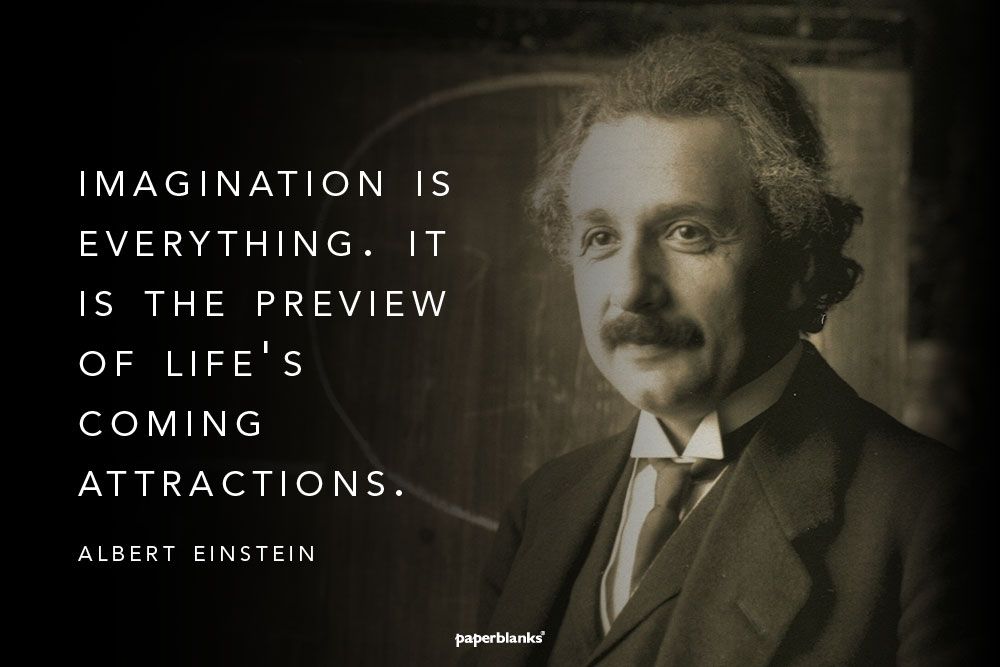
More importantly, I influenced the state of your nervous system by creating a synthetic experience of you enjoying your favorite dish. Keep in mind that I was limited to writing about a generic dish. If I’d known that your favorite food was deep dish Chicago style meat lover’s pizza, roasted Italian Eggplant Parmesan, or Raspberry Cheesecake with Oreo crust, I PROMISE you I could have you driving to your favorite restaurant sometime in the next 24 hours.
This is the power of creating a synthetic experience with your writing. The secret is to create a story that your reader can insert themselves into as the hero or the beneficiary of the story. In his book “On Writing,” author Stephen King (one of the most addictive writers of our time) talks about making the reader a “sensory participant” in the story. In other words, your reader should be able to insert themselves into your story using their imagination.
In copywriting and content marketing, this “story” is the synthetic experience of your reader enjoying the benefits of your product or service. The clearer and more vivid you can make this synthetic experience, the greater impact you’ll have on your reader’s nervous system. I’m talking about real and present biological responses, including hormone release, body temperature changes, elevated heart rate, pupil dilation, and even (if the content calls for it) sexual arousal.
The mind is a powerful thing, and by mastering the persuasive copywriting technique of trance, you step into your reader’s mind and direct a mental movie that will be so enjoyable, that they’ll be filled with the desire to buy your product or your service so they can have the experience in real life. This is the power of trance and the simple secret to learning and applying hypnotic copywriting.
Examples of Hypnotic Copywriting
The first secret to hypnotic copywriting is to use words, phrases, and descriptions that appeal to one or more of your reader’s five senses (sight, sound, smell, touch, and taste). A lot of copywriters use abstract words and phrases like “cozy,” “comfortable,” “smells great,” “looks amazing,” “beautiful design,” or (one of the worst offenders) “state of the art ____.” These abstractions give the reader’s imagination nothing to work with.
The second secret to hypnotic copywriting is to use words that prompt your reader to imagine the sensory stimulus so that their brain experiences it as real. The scientific evidence behind this is abundant, so I encourage you to research it yourself. However, I will mention one 2018 brain imaging study led by the University of Colorado Boulder and Icahn School of Medicine researchers. This research suggests that imagination is so close to reality that it can help people overcome fear and anxiety-related disorders.
“This research confirms that imagination is a neurological reality that can impact our brains and bodies in ways that matter for our wellbeing.”
-Tor Wager, director of the Cognitive and Affective Neuroscience Laboratory at CU Boulder and co-senior author of the paper.
If the imagination is powerful enough to help overcome real fears, it can certainly invoke emotion. It’s simply a matter of you mastering this technique in your copywriting. In my experience, most of the copywriting instruction on this topic is vague and unhelpful, so if you’ve been struggling, you’re not alone. But I think you’ll find the technique simple when you use the approach I teach in this section. Let’s start with an example for each one of the five senses.
Hypnotic Copywriting Example #1: Sight Words
Imagine our prospect loves the outdoors and enjoys relaxing and spending time in nature. They work hard and are long overdue for a personal getaway so they can relax, clear their mind, and get their creative juices flowing again. One morning, they open their favorite magazine and a full-page ad that starts like this:
Just Picture This…
You step out of bed in the morning and walk just ten steps onto your pine-wood balcony to gaze at endless miles of mist-wrapped, blue mountains.
Imagine cooking breakfast over a wood-fire stove, and sipping coffee on your back porch where bald eagles and red-shouldered hawks soar across a bright summer sky.

In the afternoon, you’ll tour the winding wooded nature path where beams of golden sunlight shine through crisp maple leaves. At sunset, relax on your wrap-around porch with a warm cup of tea and watch the star-studded vertical horizon of the milky way fade into view.
This is a glimpse of the soul-soothing treasures that await you at your blue-ridge cabin getaway.
Take another look at the italics in this example and notice how I used sight words. Notice also that, instead of going for a clever headline, I primed their brain for the visual experience to come using the words “…Picture This.” Assuming I’ve placed this ad in front of the right type of reader and included a good offer and call to action (which we’ll discuss later in this series), it’s bound to get a good response rate.
Before we look at the next example, let’s look at a few other techniques I used in this one. First, notice that I assumed the sale with this statement, “In the afternoon, you’ll.” I could have written “In the afternoon, you can…” but that would not have the same effect. I also used phrases like “your porch” and “your blue-ridge mountain getaway” to apply a powerful copywriting technique that we’ll cover later in this series.
The idea is to create an experience in their imagination that’s so desirable, that they won’t stop thinking about it, even if they don’t respond to my offer right away. They might even tear the page out of the magazine and post it on their refrigerator as a reminder to investigate my offer later. Now my message is occupying a space in their imagination. This is the power of hypnotic copywriting.
Hypnotic Copywriting Example #2: Sound Words
Imagine that our prospect is someone who loves tropical vacations, but hasn’t been on one for a while. They live in a big city and (most likely) work in a noisy office with tight deadlines and lots of interruptions. Then, they check their mail one day and get a postcard like this:
Listen Closer…
You can almost hear the soft crash and hiss of waves, the cry of seagulls, and the summer breeze whistling through palm leaves.
“Would you like another drink?”
“Yes please,” you answer.

Your waitress slides a frost-caked bottle of Corona from a bucket of ice, cracks it open and sets it on your table with a fresh slice of lime.
Isn’t it time to turn off the clamoring of ring tones, text chimes, email alerts, and office chatter to fall in love with the sounds of the ocean again?
Again, check out the italics in this example and notice how I used sound words. As with the previous example, I also primed my reader’s brain for the auditory experience to come using the words “…Listen Closer.” I also used a chain of negative sound words (clamoring of ring tones, text chimes, email alerts, and office chatter…”) to take them out of their imaginary beach getaway and drop them back into their noisy office.
This creates a contrast between the pleasant image of life at the beach and the clanging chaos of life at the office. This makes their imagined trip to the beach even more appealing, but it also takes it away from them. This is an example of a persuasive copywriting technique I call dissonance, which we’ll cover later in this series. The idea is that the contrast between the pleasant daydream and the unpleasant reality will create an internal pressure for your reader to act (more on this later).
Hypnotic Copywriting Example #3: Touch Words
Imagine our prospect is a man in his early to late 40s who loves lifting weights, but whose energy level is decreasing as he gets older. His workout schedule is frequently interrupted by back and/or shoulder pain. Still, he frequently sees men his age and older who seem to be doing great in this area. He knows there has to be an answer and suspects it has something to do with his energy level. Then, one day he finds an offer online that reads like this:
You Can Feel It…
Raw animal power surges through your veins, your muscles vibrating with pure energy. You just slammed your first all-natural, delicious Honey Badger Pre-Workout Formula, and you’re ready to wrap your hands around some cold-hard iron.
Sick of feeling like a blown-out tire halfway through your workout? Remember when you could push your physical limits for hours, without waking up to throbbing pain in your shoulders and lower back the next day?
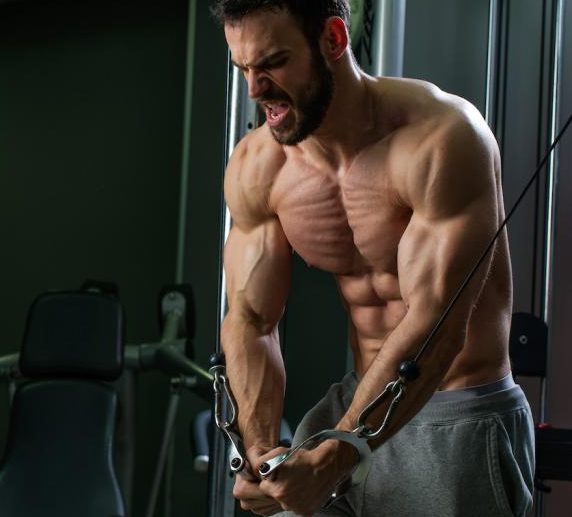
Now you can get that surging explosive beast-like energy back and stack on rippling slabs of sleeve-busting muscle by squeezing every drop of juice from your workout time. Grab a pack of smooth, delicious, all-natural, energy-packed Honey Badger Pre-and-Post-Workout Formulas, and get ready to feel your beast awaken again.
Again, check out the italics in this example and notice how I used to touch and movement words. As with the previous examples, I also primed my reader’s brain for the synthetic experience to come using the words “…You Can Feel It.” I also used a chain of negative touch words (throbbing pain in your shoulders and lower back…”) to contrast my product’s benefits with their current experience. Again, this is an example of a persuasive copywriting technique I call dissonance, which we’ll cover later in this series.
Another copywriting technique I used in this example is Dog Whistle Marketing, which we unpack in vivid detail in another article on this website. Contrary to how political commentators are now using the term, Dog Whistle Language is an important tool for making authentic connections with your reader. For example, the terms “raw animal power,” “cold-hard iron,” and “feel your beast awaken…” are Dog Whistle Words.
They have a unique and meaningful appeal to the prospect described above, but will likely seem uninteresting or even stupid to people outside this target market. This is how “private language” gives our ad an authentic ring that simply can’t be achieved by trying to use words that appeal to a broader audience. This will make your hypnotic copywriting even more effective and genuine.
By far one of the most common mistakes I see in marketing is the impulse to favor vague, vanilla language over audience-specific language, all for the sake of trying to appeal to “everyone.” Vagueness does not create value, and it makes your writing unmemorable and unpersuasive. This is another good reason to start EVERY content marketing strategy by defining your Buyer Persona and their corresponding data groups.
When you know your general audience this well, you can use a combination of Dog Whistle Language, Semantic Relevance, and Emotional Relevance, to create truly authentic hypnotic copywriting messages.
Hypnotic Copywriting Example #4: Taste Words
This example is for anyone who is hungry and who enjoys fresh gourmet Pizza:
Now Take a Bite…
Sink your teeth into the hottest, crispiest, most delicious slice of deep dish, New York Style Pizza you’ve ever tasted.
Taste the thick layers of chewy mozzarella over a bed of fresh, tangy homemade tomato sauce.
All our pies are made with hand-tossed crust and baked to piping hot perfection in a wood-fire oven imported directly from Italy!
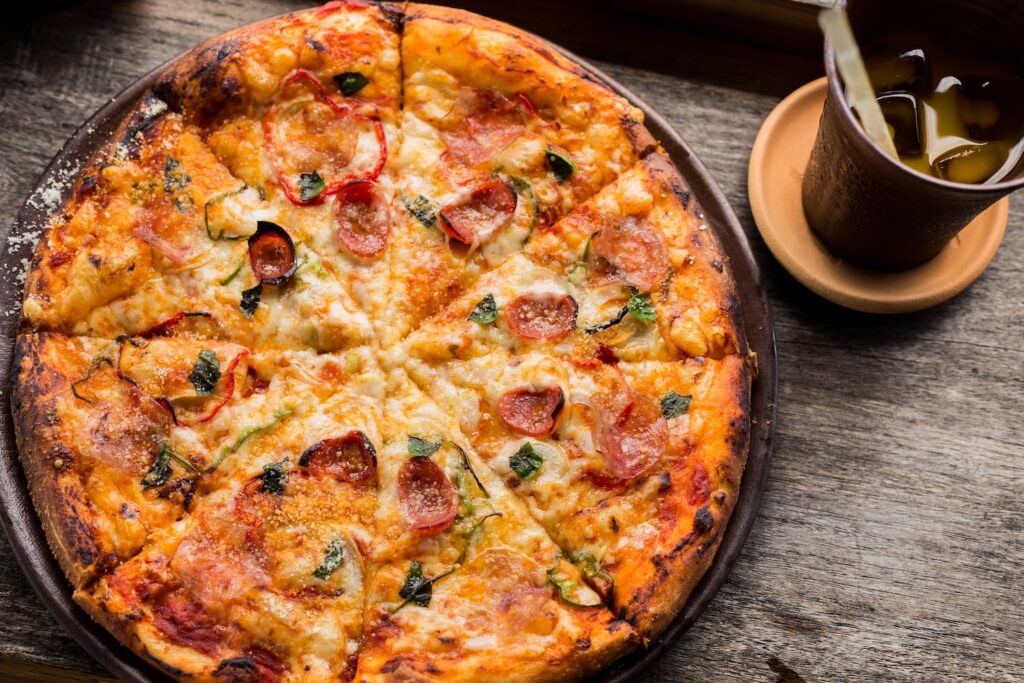
Each thick, hearty slice is loaded with fresh, organic herbs, picked right from our local garden, just this morning!
Hungry? Enjoy a taste of authentic homemade goodness tonight. You’ve worked hard and it’s time to reward yourself with a mouth-watering pie (or two) of our hot, crisp, award-winning New York Style Pizza.
Again, check out the italics in this example and notice how I used taste, texture, and temperature words to create a vivid “mind movie” of our reader enjoying pizza. As with the previous examples, I also primed my reader’s brain for the synthetic experience to come using the words “…Now Take a Bite.” If our reader loves Pizza and happens to be hungry when they get this ad in the mail, and if the call to action and offer is good, they’re very likely to either visit our website or call and order a pizza.
Hypnotic Copywriting Example #5: Smell Words
Imagine that our prospect is a career driven woman who enjoys decompressing at a high-end spa. She is in a new city for a week on a business trip and wants to visit a good local spa. While searching listings online, she finds a business with good reviews, visits their website, and reads this:
Breath It In…
Enjoy the sweet smell of citrus candles, and warm cinnamon, pine, jasmine, fig, or floral massage oil as you lie down for a deep tissue Swedish facial massage.
Our scientifically designed scent profiles activate your smell receptors, sending messages to your body to regulate heart rate, breathing patterns, lower your blood pressure, and reduce anxiety.

Start your custom spa experience by choosing your private scent profile below:
Choose your scent profile now, then book your spa date, and come breath in the aroma of relaxation and rejuvenation.
Again, check out the italics in this example and notice how I used smell words to drop our readers directly into their spa experience. As with the previous examples, I also primed my reader’s brain for the sensory experience to come using the words “…Breathe It In.”
I also created a “soft sell” by giving them a list of custom scent profiles to choose from, which would then lead them to a page where they’d book their appointment. This is an example of using a soft call to action (choosing their scent profile) to mentally prepare my reader for a hard call to action (setting their appointment).
We will discuss the difference between soft and hard calls to action and how to combine them for maximum response later in this series.
How to Apply Hypnotic Copywriting
Learning hypnotic copywriting starts with understanding a concept called The Ladder of Abstraction. The Term “Ladder of Abstraction” was coined by S.I. Hayakawa in his book “Language in Thought and Action,” which was published back in 1949. Since then, other writers, marketers, and communication experts have created various adaptations of the model. My own adaption is defined below and illustrated in the following infographic and example:
Ladder of Abstraction: a conceptual model that organizes writing on a continuum, with the top of the ladder representing the most abstract writing and the bottom representing the most concrete. The VQ Success Selling System defines these levels (from the top of the Ladder of Abstraction to the bottom) as: 1) Conceptual Writing, 2) Topical Writing, 3) Storytelling, 4) Descriptive Writing, and 5) Hypnotic Copywriting.
Example of The Ladder of Abstraction
– Article Continues Below Example –
– Article Continues Below Infographic –
Ladder of Abstraction Infographic
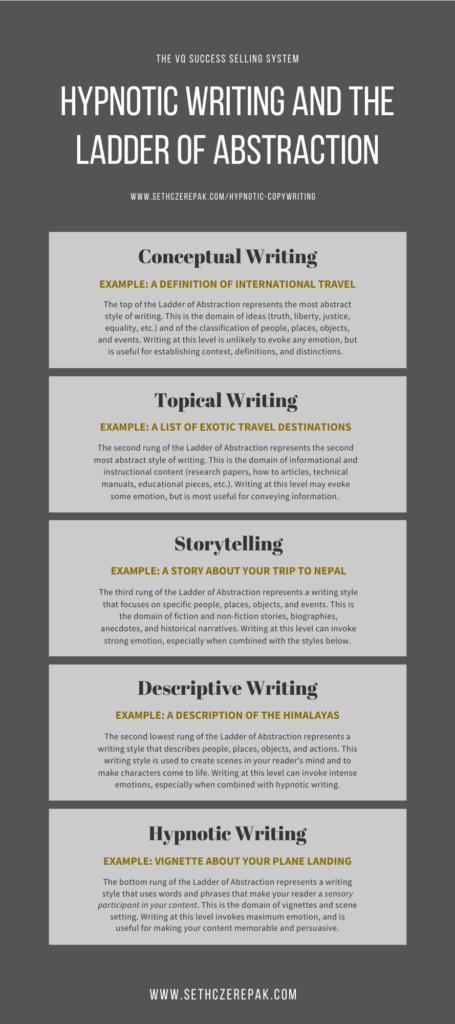
The Ladder of Abstraction is not a shortcut writing technique. It’s a complex skill that takes time and effort to learn, practice, and master. The good news is, it’s also the secret to mastering many essential writing techniques, including hypnotic copywriting. Before I explain how to do this, let me make a few comments about the example I shared above.
First, you’ll notice that the levels of the Ladder of Abstraction can sometimes overlap. For example, you can be in the middle of a story (Storytelling) and make a quick trip up the Ladder to explain a concept (Conceptual Writing). You can also move down the Ladder of Abstraction to describe (Descriptive Writing) something in more detail, or to engage the reader’s emotions through Hypnotic Copywriting.
The secret is to understand the effect of each level on your reader and to use this knowledge to intentionally manage your reader’s awareness. In my experience, the best writers (fiction and non-fiction) are masters of navigating the Ladder of Abstraction.
Whether they’re consciously aware of the concept itself is irrelevant. Great writers do this instinctively but don’t assume that this means they do it effortlessly or that you can’t learn and master this skill through conscious effort.
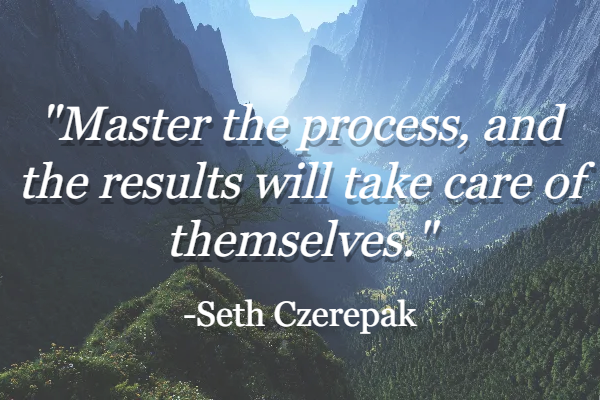
In fact, I argue that when you learn and apply The Ladder of Abstraction consciously, your writing becomes more enjoyable and more effective. Lack of knowledge of the fundamentals of good writing is the root of much writing anxiety, and of the need for a writer to edit, revise, or even rewrite their work in order to make it “flow right.”
Some of the most famous and successful writers in history have complained about these problems, and it’s easy to assume that they’re an unavoidable part of the writing process. The good news is, you can dramatically improve your writing and remove much of this doubt, anxiety, and over-editing by intentionally applying The Ladder of Abstraction in your writing.
Mastering Hypnotic Copywriting
There are two steps to mastering hypnotic copywriting. The first is simply to practice using sensory words in your writing. At first, you’ll want to work these words in during the second round of your editing process (see my article on Content Creation for more on this subject). Soon, you’ll find yourself naturally using sensory words while drafting and free-writing. I suggest building your own collection of sensory words and phrases, but here’s a list to get you started:
Sight Words
(vqsuccess_show show=copywriting key=sense val=sight).
Sound Words
(vqsuccess_show show=copywriting key=sense val=sound).
Touch Words
(vqsuccess_show show=copywriting key=sense val=touch).
Taste Words
(vqsuccess_show show=copywriting key=sense val=taste).
Smell Words
(vqsuccess_show show=copywriting key=sense val=smell).
The second step to mastering hypnotic copywriting is to use The Ladder of Abstraction in your writing. Since this is a complicated concept to grasp, I suggest you start by analyzing the work of other writers. As you do this, you’ll notice that some pieces spend a lot of time on one level of The Ladder of Abstraction, while other pieces move between multiple levels.
Truly remarkable writing (fiction and non-fiction alike) makes tasteful use of all five levels. Your job is to do this intentionally, and this starts with recognizing how other writers do it. Here’s a list of pieces that demonstrate the top three levels of The Ladder of Abstraction:

As you read these pieces, remember that any writer can use The Ladder of Abstraction whether they are aware of the concept or not. The same is true for writers who were around before the term “Ladder of Abstraction” was coined and the concept was codified into language. Your goal is to apply it intentionally, and that starts with recognizing it in other people’s writing.
Once you can recognize Conceptual Writing, Topical Writing, and Storytelling, you’re ready to start analyzing other people’s writing and recognizing the difference between the bottom two levels (Descriptive Writing and Hypnotic Writing). I will explain this difference in a moment. First, here is a short list of some authors who move fluently between all five levels to create truly magical reading experiences:
As you read the work of these writers (and others not included in this list), ask yourself two questions:
The more you do this simple analysis, the clearer picture you’ll get of the function and value of each of the five levels. Soon, you’ll find yourself using them in your work, and your writing will elevate to a whole new level. I’ll give you a breakdown of the purpose of each level, and an explanation of what happens when you use them too little or too much in a moment. First, let’s answer an important question about the bottom two levels of The Ladder of Abstraction.
Descriptive Writing vs Hypnotic Writing
“Don’t say the old lady screamed. Bring her on and let her scream.”
― Mark Twain
This quote defines the difference between Descriptive Writing and Sensory (Hypnotic) Writing perfectly. More formally stated, Descriptive Writing uses conceptual or concrete descriptions, while hypnotic writing uses sensory descriptions. From the reader’s perspective, Descriptive Writing creates a picture in the mind while hypnotic writing creates the imagined impression of actions unfolding in real-time.
For example, if I describe a character by saying, “Greg was a father of two children, a devoted husband, and a passionate minor league baseball coach.” that’s a conceptual description. It gives you general demographic information about Greg but doesn’t create a picture in your mind.
If I describe Greg by saying, “Greg stood 5’10, stout and broad-shouldered with gold-rimmed glasses and calloused hands from swinging wooden bats in batting cages…” you now have a concrete description of Greg that creates a basic picture in your mind.
However, this picture is more like a statue in a wax museum than a real person. But if I say, “Greg’s icy-blue eyes peered from behind thin gold-rimmed glasses. His hands clenched into white-knuckled fists and pearls of sweat broke out on his broad gray-haired chest as he belted commands at his players in a voice that sounded like a cross between a tuba and a chainsaw…” Greg suddenly comes to life. He’s now animated in a way that reveals subtle impressions about his personality.
I don’t have to tell you that Greg is past middle age or that he’s passionate and intense, and that he has a physically intimidating presence. In fact, you probably filled in other details about Greg that weren’t mentioned at all in my example. This is how hypnotic writing engages your reader’s imagination and makes them an active participants in your story. This makes it very effective for engaging the emotions and making your writing more memorable and persuasive.
To wrap things up, here’s a quick summary of each writing style on The Ladder of Abstraction, and an explanation of what happens when you use them too little or too much in your writing:
Conceptual Writing
Topical Writing
Storytelling
Descriptive Writing
Hypnotic Writing
Congratulations! You now have some invaluable insights and tools for learning and mastering hypnotic copywriting. It will be hard work, and your writing might seem odd or unnatural when you first start using these tools. The writing and editing process I introduce in my Content Creation Article will help tremendously to iron out some of this awkwardness.
Soon, hypnotic copywriting will become a seamless part of your writing process and will help you develop your own unique voice. The next step will be learning to lead your reader with a combination of two copywriting techniques, which we’ll discuss in the next two articles.
